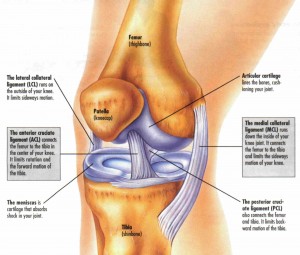Whether it’s a student-athlete or an active adult, ACL injuries seem to be becoming more and more common. Some of these incidents stem from direct trauma to the knee, but many do not and can be prevented with the right approach.

According to the Cincinnati SportsMedicine Research and Education Foundation, about 70 percent of serious knee injuries occur during non-contact situations such as landing from a jump or turning, twisting activities when a sudden knee imbalance occurs.
“There are a lot of factors that contribute to ACL injuries,” said Youngstown Orthopaedic Associates’ Denny Kovach, athletic trainer at Canfield High School. “You can’t always pinpoint the cause of these injuries, so we just try to look at the whole perspective of trying to prevent them.”
What is the ACL?
An anterior cruciate ligament, or ACL, injury is a tear in one of the knee ligaments that joins the upper leg bone with the lower leg bone. The ACL keeps the knee stable.
Injuries range from mild, such as a small tear, to severe, such as when the ligament tears completely or when the ligament and part of the bone separate from the rest of the bone.
An anterior cruciate ligament (ACL) injury often is called a sprain. A sprain occurs when the threads or fibers of the ligament stretch or are torn. Most ACL injuries occur in the middle of the ligament.
Kovach believes that today’s shoes play a critical role in the incidents of ACL injuries. While the shoes are light and attractive because of their bright colors or interesting design, they don’t always offer the kind of support needed by athletes or active adults.
“With shoes of the past, you could adjust the cleats for different playing surfaces. But today, it’s one size fits all and I’m not sure that’s the way to go in helping prevent injuries. The shoes may look great, but there’s not much practicality to them.”
Injury Prevention
Besides proper footwear, exercise and stretching are key to preventing ACL injuries. Kovach believes that spending time on building strong leg muscles helps stabilize the knee and decreases the odds of ligament damage in the knee.
“We try to maintain strong quad muscles and strong hamstrings to help stabilize the whole leg, including the knee,” he explained. “Activities are a lot more aggressive these days, so you are susceptible to knee injuries. One of the best things you can do is to build strength in the whole leg, all the way down to the ankle.”
Without treatment, an injured ACL is less able to control knee movement, and the bones are more likely to rub against each other. This is called chronic ACL deficiency. The abnormal bone movement can also damage the tissue (cartilage) that covers the ends of the bones and can trap and tear the pads (menisci) that cushion the knee joints. This damage can lead to osteoarthritis.
Sometimes other knee ligaments or parts of the knee are also injured. This includes cartilage such as the menisci, or bones in the knee joint, which can be broken.
Treatment
There are two ways to treat the injury:
- Exercises and training, also called rehab. It takes several months of rehab for your knee to get better.
- Surgery. You and your doctor can decide if rehab is enough or if surgery is the best course of action. If you have surgery, you will also have several months of rehab afterward.
Treatment will depend on how much of the ACL is torn, whether other parts of the knee are injured, how active you are, your age, your overall health, and how long ago the injury occurred.
There are three main treatment goals:
- Make the knee stable if it is unsteady, or at least make it stable enough to do your daily activities.
- Make your knee strong enough to do all the activities you used to do.
- Reduce the chance that your knee will be damaged more.
